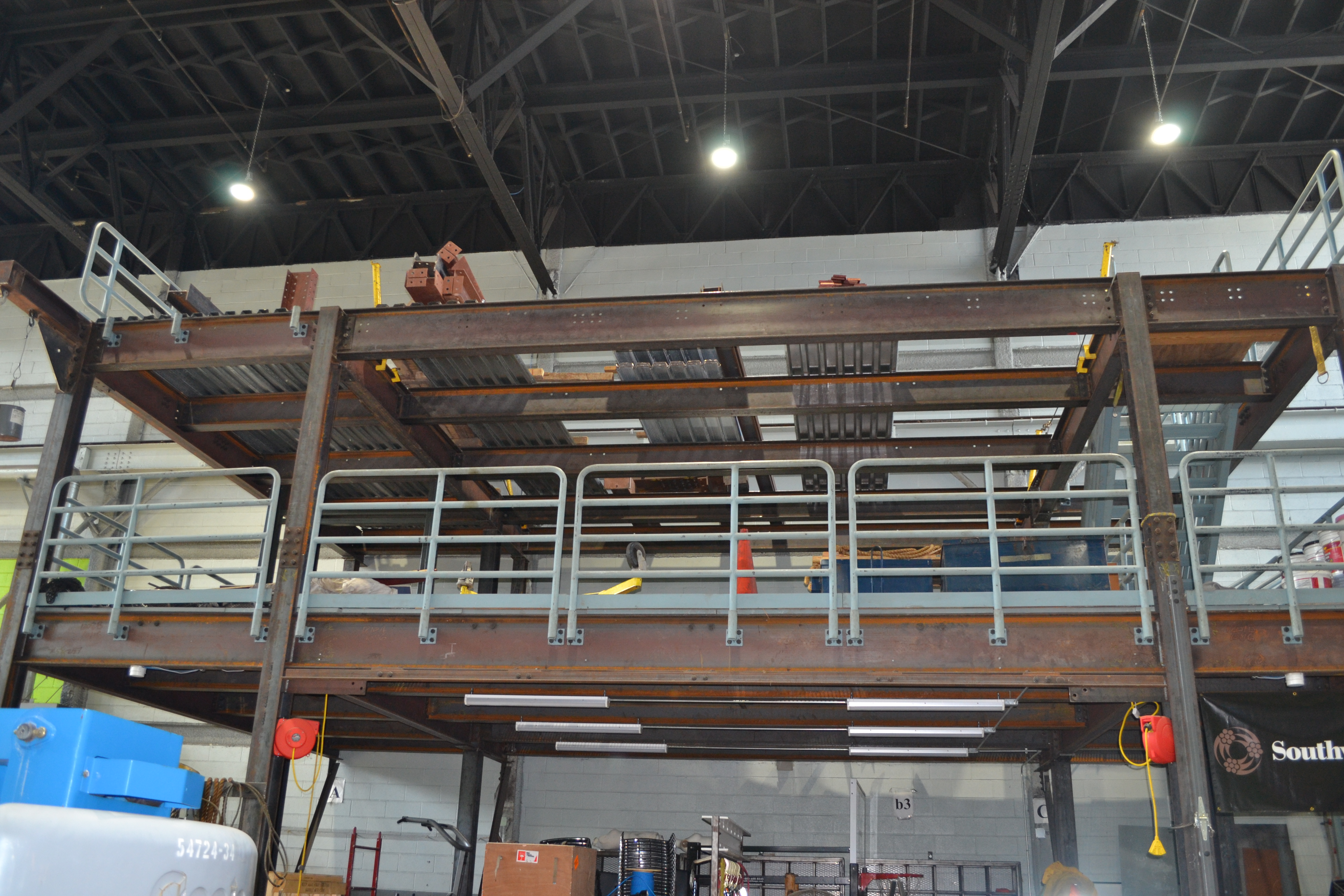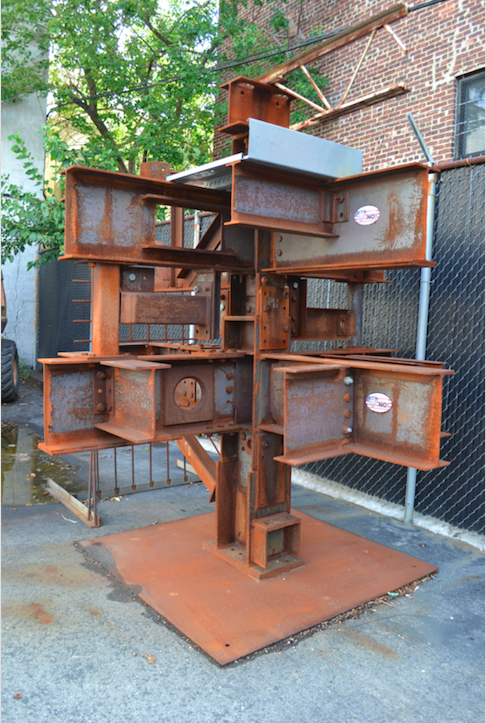
New York, NY – The Iron Workers Locals 40 & 361 apprentice program is the fifth oldest apprentice program in New York; it has been registered with the New York State Department of Labor since 1944. Thousands of students have graduated the program and gone on to fill the difficult and often dangerous jobs as Structural Iron Workers throughout the New York City area.
LaborPress took a trip to the Iron Workers Locals 40 and 361 Training Facility in Astoria, Queens to take a look at the impressive center and learn more about the program from Bryan Brady, the Director of Training for the last 14 years. Mr. Brady began his Iron Working career in 1984 and was an instructor for three years before becoming the Training Director. The Iron Workers and their contractors bought the building 23 years ago, and wrk together to train the Local 40 and 361 Iron Workers to be the safest and most professional in their industry.
The three-year program consists of classroom instruction — students attend classes twice-a-week and occasional Saturdays — welding, and on the job training. They receive monthly evaluations, at the same time working on job sites. They spend 204 hours per year in the classroom, for a total of over 600 hours of classroom education, and over 4,000 hours of actual job site training when they graduate.

Recruitment is done every two years where an average of 3,600 people apply to the program, says Mr. Brady. The applicants take a written exam which is graded and ranked, the top ranked applicants are invited back to take a physical test. The people who pass the physical test are accepted into the program contingent on passing a drug screening. On average 200 people are taken in; 100 start right away, then another 100 the following year.
The JAC instructors share their experience with the students in the classroom and the 12,000 square foot work shop that boasts 35 welding stations equipped with stick and wire feeders — two different processes of welding — in every booth. There is also a five ton overhead crane used for hands on training when erecting structural steel mock ups. The courses lead to licenses and certificates in OSHA safety, firstaid/CPR, welding, rigging, signaling, scaffolding and more to meet any and all NYC DOB and NYS requirements.
Meanwhile, on the job training varies widely, says Mr. Brady. “It could be almost anything: a small business with one owner, [where an apprentice is] putting bolts in place and setting and erecting the steel or on the Brooklyn Bridge helping 120 other Iron Workers perform their daily tasks efficiently.”
Mr. Brady continues, “We’re pretty fortunate, the major bridges are frequently in need of upkeep. The George Washington Bridge cables [for example], need replacing. [So it’s necessary to] cut them out, and replace them with new ones.” The workers must “put temporary cables to hold it, then cut the old ones out, put new ones in, and tighten them up to the proper level. It’s a lot of labor.”
While in the program, apprentices earn a full union apprentice salary, as well as benefits. The advantages of having gone through the program are considerable. These Iron Worker students go on to work the next 30 years with responsible contractors who pay all of the required taxes and benefits that support not only the workers, but the communities they live and work in.
Mr. Brady says that some of the statistics he sees show that only 40% of High School graduates end up attaining a college degree.

“What is everybody else supposed to do to earn a living?” he asks. “The trades, the union apprentice programs, lead to true middle-class jobs. This is a great opportunity for those without college degrees. Unions are under attack everywhere. Politicians say they want their constituents to have good jobs – but when they support construction contractors that do not provide training and living wages for their employees they are limiting the opportunities of city residents to enter the middle class.”
Mr Brady continues, “People who work for these contractors for cash and no benefits often find themselves struggling to support themselves and their families – how do you provide for your family without medical benefits? Yes, a union employee costs more up front, but the government will never have to support [union workers] when they need medical care now or when they retire 30 years from now. When contractors don’t follow prevailing wage laws, there is less opportunity for the average New Yorker to join the middle class. When these contractors don’t train their workers it is dangerous for the workers and the public — 92% of deaths in NYC construction occur on the sites of these unscrupulous contractors who are taking advantage of their workers.”
The Iron Workers Locals 40 & 361 Training Facility is also available to 2,500 journeymen Iron Workers who return to school to sharpen their skills and gain Continuing Education Units (CEU’s), as certifications expire and need renewal.
The Locals also have an impressive resume of community involvement. They have, for example, donated over 2,400 pints of blood to the New York Blood Center. They have also donated over 1,000 toys at their annual holiday toy drives for less fortunate children, and have given over $250,000 to multiple charities, including St. Jude’s, where they also volunteer at their annual fundraising walk. Iron Workers are also encouraged to participate together in group events like the 9/11 Memorial 5K and give back to their communities whenever they are able. Having a true middle class career gives people the opportunity to help our communities in many ways.

